An artist’s work is never truly finished. Once you have a full series on a certain number of artworks a question will pop up: how can I market myself as an artist? how do I share this? How do I let people know about my art? There are no “fit for all” answers, the decision-making this implies is as unique and personal as your work, it has to do with how you present it and how you want people to interact with it.
The first step to marketing yourself as an artist or art business is losing the feat of being “salesy” or “marketable”. Creating a strategy to promote something you worked on or wanting to share it with an audience doesn’t make you a “sell-out”, you are building up the basis of a profitable career doing what you are passionate about.
Whether you are taking your first steps as an artist or already running your own art business, we’ve gathered 8 essential steps to market yourself as an artist.
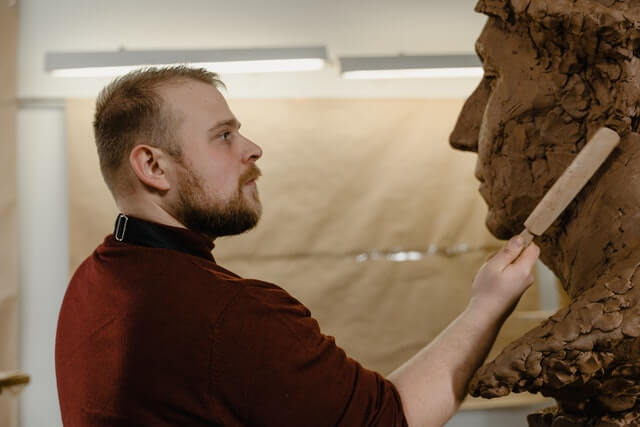
Know yourself = know your brand. To promote your work you need to be able to communicate what it is about.
1. Define what you do as an artist
In order to communicate correctly what your work is about, first, you need to create a definition that fully describes it, one that you are comfortable with and that captures your personality and the train of thought behind it. There are thousands of “portrait in acrylic on canvas”, so what makes yours stand out from the crowd? Is it the subject, a mixed media technique, or the used medium?
The starting point for any strategy that will help you market yourself as an artist is being able to describe your artwork, from the tangible and visible to the conceptual sides of it. This will take you to the second step. Who is interested in this kind of art?
2. Know your audience: what are your art niches?
If you want to market yourself as an artist you need to think about something first: who do you want to see your work? All marketing strategies have at their core reaching a goal audience: a specific group of people that given their age, gender, location, particular tastes, and even income, could be interested in what you are communicating and could invest in it.
To define your audience take a look at the people who usually interact with you and your body of work, for example, those who usually share or like your creations on social media, and others that have previously expressed interest in your pieces, and visited your exhibitions, made inquiries about your pieces or have purchased one in the past. Not only can you reach back to them but you can take them as the model of the “ideal” potential client you want to approach.
Most artworks will fall into an art niche, which means they appeal to a certain audience with an interest in a particular subject, theme, or technique. Recognizing your audience and niche is key to marketing yourself as an artist, it lets you know who you are talking to, what these people like, where they usually gather, and even how to reach out to potential clients or supporters to present your body of work.

What is the motivation behind wanting to market yourself as an artist? Define a clear goal!
3. Establish a marketing goal as an artist
So, you want to market yourself as an artist. Before drafting any strategies you need to establish a clear goal: what is the primary intention behind wanting to increase your reach and presence as an artist? Maybe you want to book exhibitions, curate your own, generate more commissions, start a gallery, boost your art sales, dive into the world of crypto art or even widen your audience.
Regardless of how big your end goal is, you can break it down into smaller tasks that will draw your path to your own definition of success. Make sure these tasks can be measurable and have a deadline, this way you know what you need to achieve and when in order to move forward with your main goal of marketing yourself as an artist.
4. Create a portfolio: your presentation to the market
Your portafolio is a full presentation of your body of work. It should reflect your range, interest, and main themes you tend to portray, it has to be carefully curated to present you and your work in the way you want to be seen. Creating your portfolio is also a creative exercise.
An image is worth a thousand words, but visitors (aka potential buyers) are also interested in hearing from you: what are your motivations and inspirations? What do you want to express in your creations? What’s your experience? All that should be summed up in an artist statement (or your “About Me” page).
Today a portfolio can take the form of a professional website where you show your work. If you want to put a twist on the presentation, you have options like creating an online gallery to present the best of your work. With ArtPlacer’s Virtual Exhibitions you can easily create a 3D gallery showcasing your work with just a few clicks: just choose a venue, upload your artworks, drag and drop them in place, add a description (and even price and a button for inquiries), and customize the space to make it your own, you can change the color of walls and floors, adjust the lighting and contrast, and even add frames for each piece. The best part? In these online galleries, you can showcase anything from images to NFTs and videos, you can show the full range of your creativity.
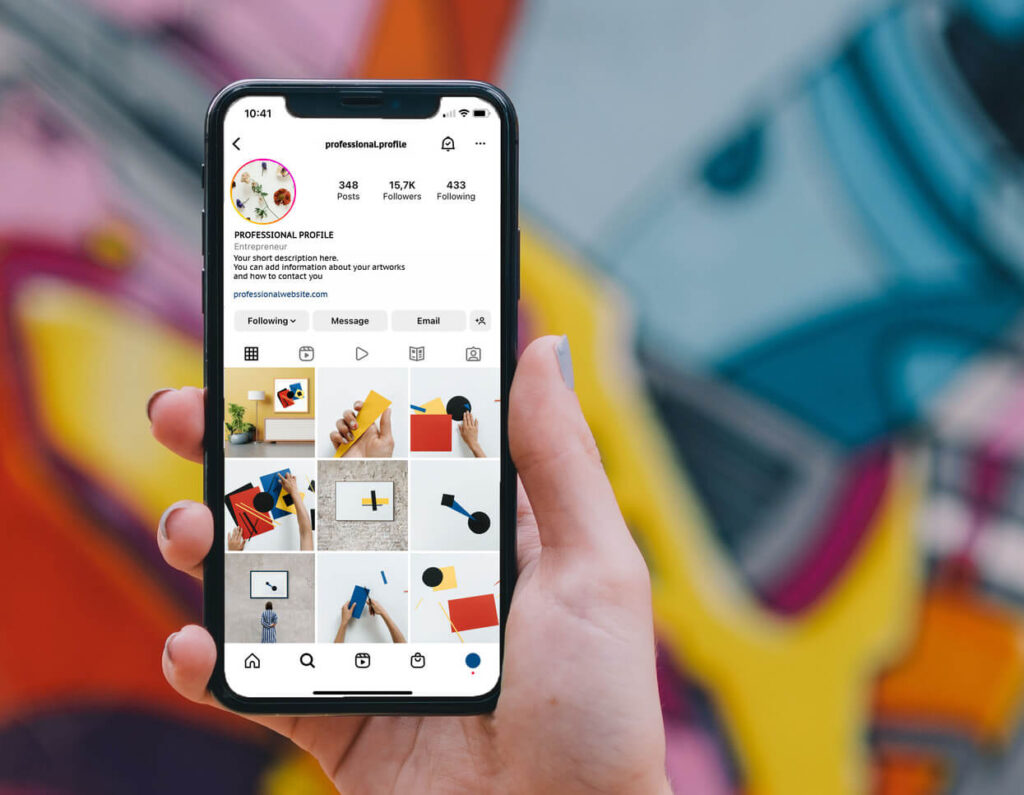
Being active on social media can help you create a community around your work and boost your presence as an artist.
5. Create an online presence
Followers are not only there to “drop a like and comment”, they are the modern patrons of the arts. They support your work by sharing it and helping you reach a bigger audience, they can be potential clients and even help you finance a project through crowdfunding.
But followers don’t just magically appear. In order to build a community around your work you need to share content about it, things that like-minded people will be interested in. You can show your creation process, the behind-the-scenes to your next art show, your sketches, and, of course, your finished artwork. Your social media profile should tell visitors everything they need to know about you.
There are many digital tools artists can use to create a successful profile: from scheduling tools to posting images and video content. For example, with ArtPlacer’s Room Mockups, you can create Instagram-worthy images of your artwork in a digital room mockup to give a better sense to your followers of how the piece would look in a certain space, and also, give your feed a curated aesthetic.
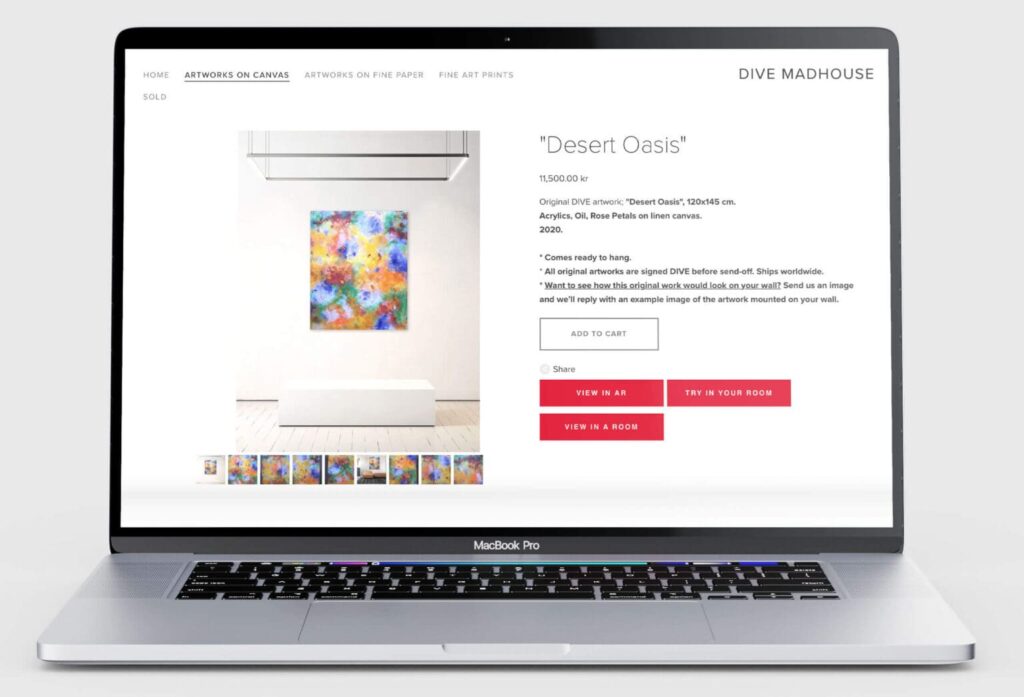
One of the main goals of marketing yourself as an artist is creating different streams of revenue using your artwork.
6. Market your artwork
If you want to sell your artwork, receive inquiries about it or accept commissions, you need to have a space where potential customers can learn more about your work and how to contact you. Having a professional website is now essential but mixing in features of e-commerce is what will take your marketing strategy to another level.
ArtPlacer’s Widgets are simple “Try before you buy” integrations for artists’ websites. The Client Rooms feature activates a customizable button on your website that allows visitors to “drag and drop” your art pieces into pictures of their own spaces, the result is a scale-accurate layout that will help them see how your work looks in the area they want to present it.
With the Augmented Reality widget, potential customers can use their device’s camera to visualize your art on their walls, a new shopping experience that solves customers’ uncertainty and reduces pre-purchase friction. For an artist pushing their own business, getting these customizable buttons accelerates the decision-making process by providing clients with accurate previews of art in place.
Other options for making your work accessible and getting your art in front of potential shoppers are:
-Loans
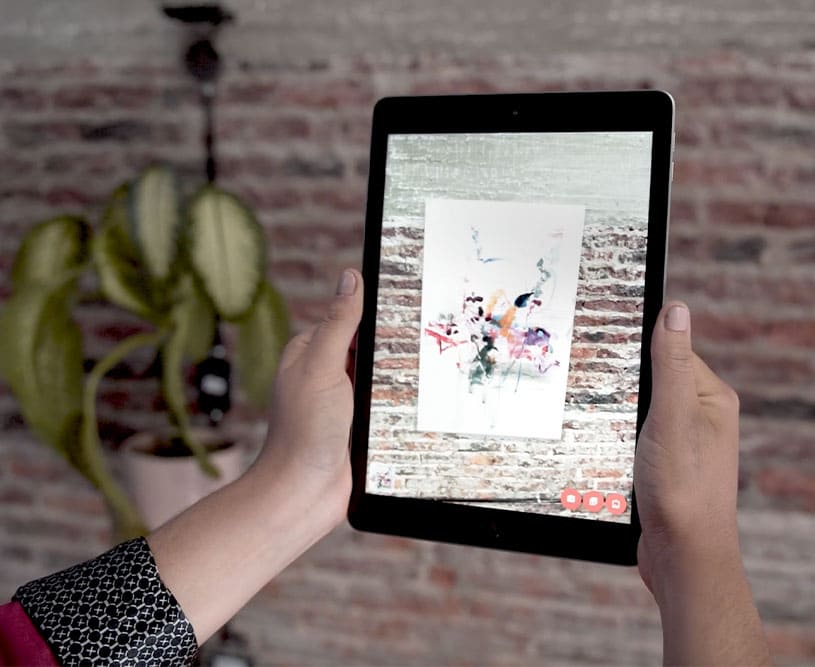
Turn followers and visitors into art buyers by helping them visualize your art in place.
7. Define a selling strategy for your artwork
One of the most common motivations for artists to market themselves is to increase their sales and make a profit. For many up-and-coming artists, this stream of revenue means having the capital to invest in their passion and make a living out of it. Decisions need to be made to draft a plan that will lead to the desired sales: do you want to be an independent artist or do you want to work with a gallery? Are you going to make most of your business locally or do you want to expand to a global audience with an online presence? These answers can give you a clearer view of which steps you need to take.
Most selling strategies follow the next steps:
- Have a good description of your body of work
- Know your audience
- Interact with your audience and showcase your work
- Promote your work
- Make it easy for potential shoppers to inquire and contact you
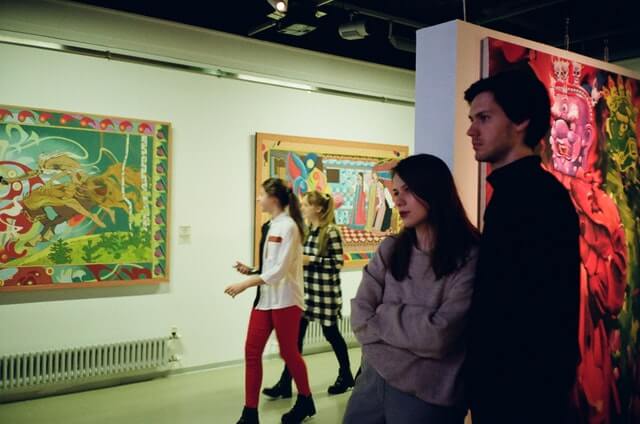
Gallerists, curators, colleagues, art lovers, and potential clients, get to know the people inside your local art community.
8. Networking: get to know the art market
Networking is key because it calls for direct interaction with people that can boost the reach of your work, from gallerists to collectors and art lovers that can be interested in investing in what you do. Nowadays, networking not only happens in the hot-spot gallery in your city, artists also face a global scenario full of opportunities: your ideal customers could be somewhere across the world and the only thing you need to reach out to them is a proper online presence and opening up to interact with them.
Having a profile in art-focused websites can help you erase all distances. ArtPlacer’s Discovery Page features artists and gallerists from all over the world and makes it easy for collectors and shoppers to discover and acquire new artworks. All you need to do is to fill up your profile and highlight what makes your work unique. Your art can even be featured and get extra exposure!
Mix and match these steps and create your own strategy to market yourself as an artist and present your artworks to wider audiences!
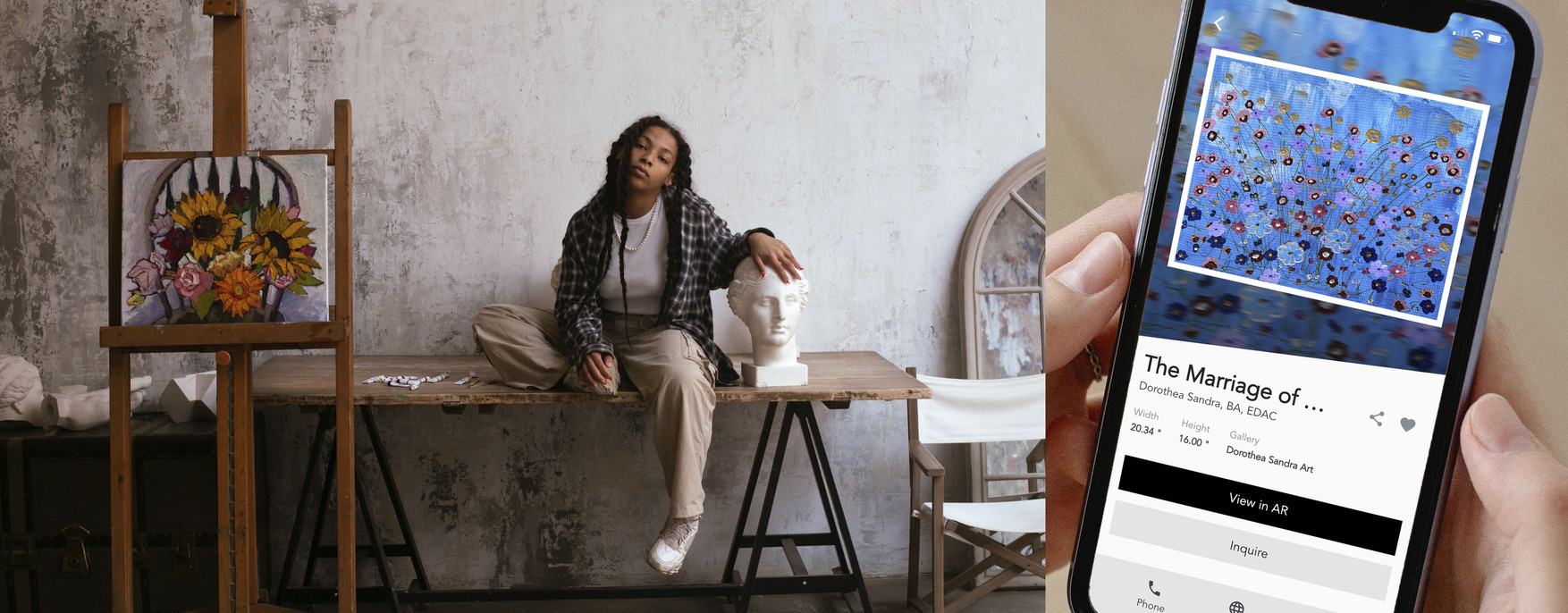
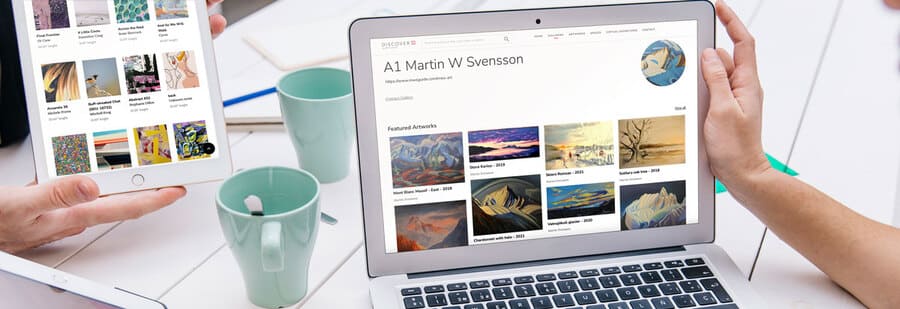
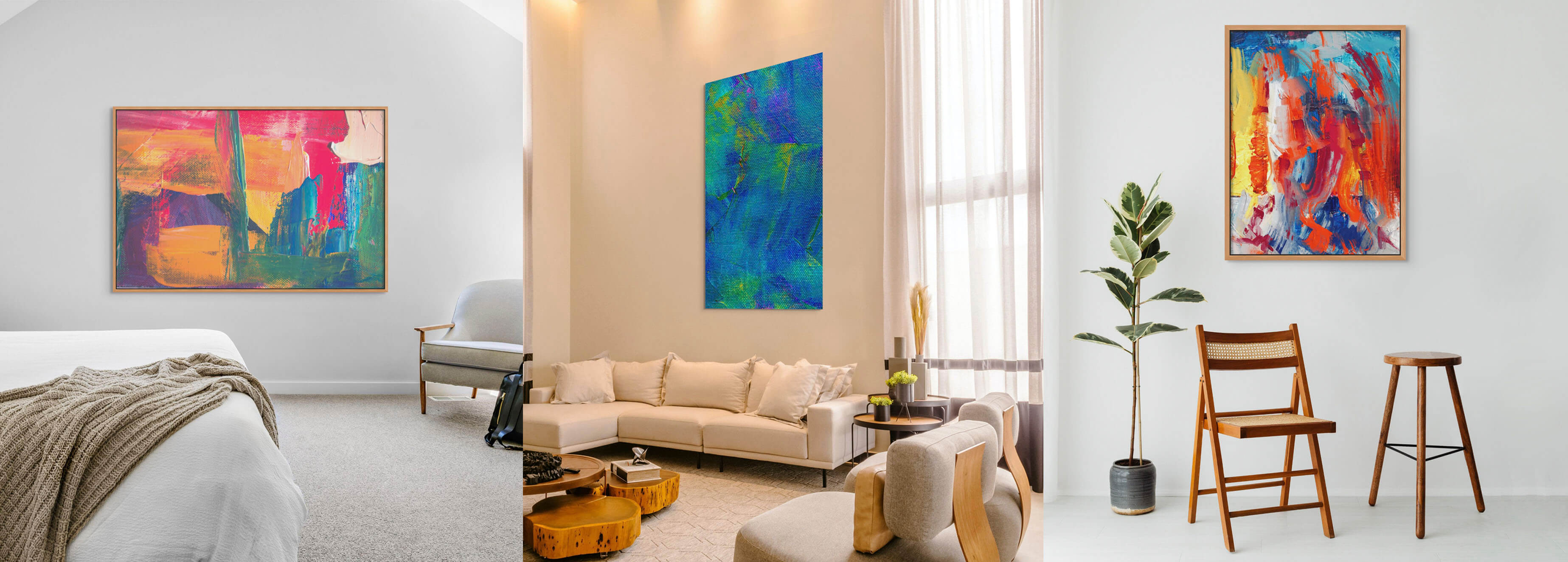
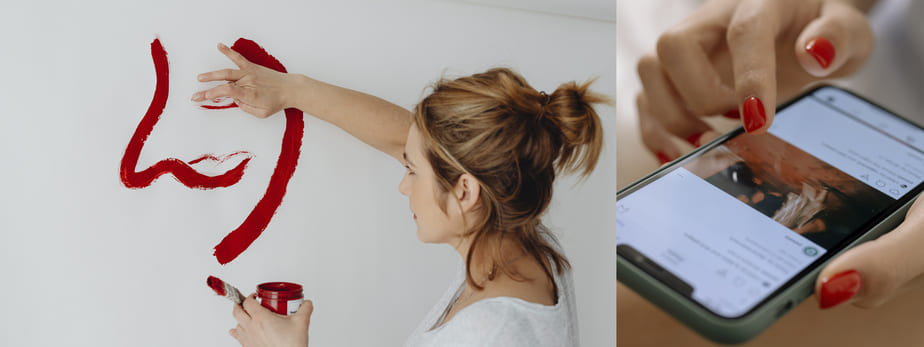
This has helped me out a little bit on where should I market myself.